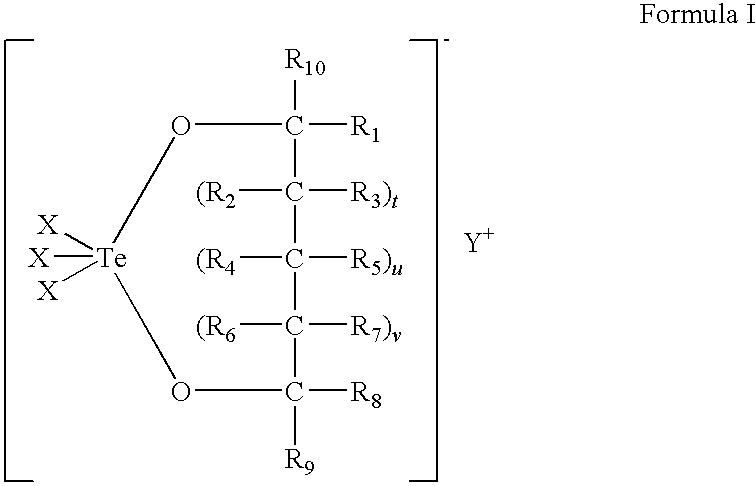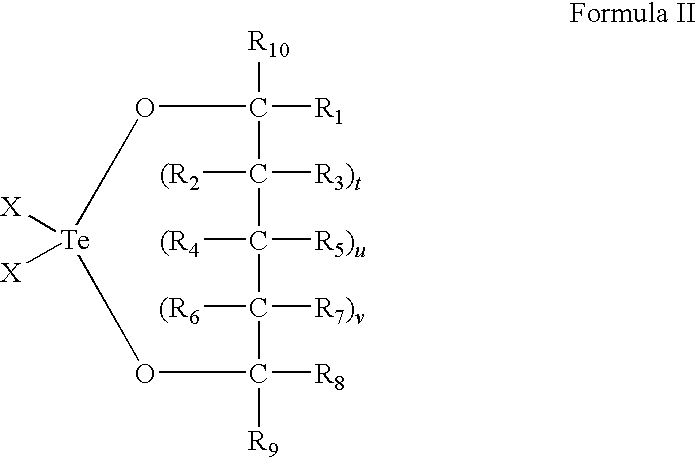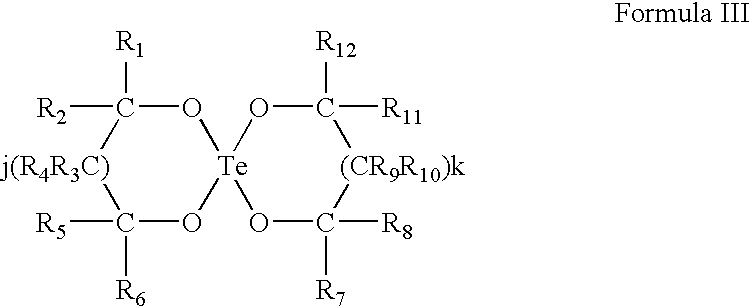Use of tellurium compounds for treatment of basal cell carcinoma and/or actinic keratosis
a technology of actinic keratosis and tellurium, which is applied in the field of tellurium compounds for treating basal cell carcinoma and/or actinic keratosis, and the treatment of skin conditions by pharmaceutical compositions and therapeutic methods, can solve the problems of inability to respond to the tumor, significant local destruction and disfigurement, and immunosuppressive effects on the skin, so as to prevent the appearance of clinical or aesthetical symptoms and improve the appearance of clinical or aestheti
- Summary
- Abstract
- Description
- Claims
- Application Information
AI Technical Summary
Benefits of technology
Problems solved by technology
Method used
Image
Examples
example 1
Assessment of the Effect of Tellurium Compounds on Basal Cell Carcinoma
[0244]The in vivo effects of the compounds of the invention can be assayed through various animal models known to those of ordinary skill in the art. Generally such assays involve the injection of a carcinoma cell line, of mouse or preferably, human, origin, into a cohort of mice.
[0245]In most experiments, two groups of experimental mice are studied: a first, control, group which receives only the cell line but no tellurium compound, and a second, test, group which receives the tellurium compound. This second group is divided into several subgroups each of which receives a different dose of the compound, preferably between 10 μg and 100 μg per day for 10-20 days. On these days, the control group will be administered control doses containing only vehicle with no active agent.
[0246]The tellurium compounds may be administered at the time of inoculation of the malignant cells, shortly thereafter or following initiati...
example 2
Assessment of the Effect of Tellurium Compounds on Actinic Keratosis
[0248]Female, 6-7 weeks old, hairless albino mice (skh-1) are used.
[0249]Mice are divided into three groups containing 5-14 mice per group. A first group is treated with a composition comprising AS101. A second group is treated with a composition comprising SAS. Each treatment consists of a single topical application of the composition over a 2 cm2 area on the dorsal surface. Each composition comprises the tellurium compound and a pharmaceutically acceptable carrier. A third group of mice, serving as control, is treated with the carrier alone.
[0250]After 15 min. following application, the mice are irradiated with x-rays. Exposure of mice is repeated three times a week for a total of 20 weeks. The skin thickness of mice, and papillary skin lesions greater than 1 mm in diameter are measured and recorded twice every week and the average of the two measurements used in the calculations. At the end of the study, 5-19 les...
example 3
Assessment of the Treatment by Tellurium Compounds of BCC and / or AK-Human Studies
[0251]Double-blind, randomized studies are carried out on patients with histologically confirmed, visible multiple actinic keratoses and / or basal cell carcinoma. A topical composition comprising AS101 (4 percents) or SAS (7-8 percents) is applied to affected areas once daily, three times per week, and washed off the next day, after around 10 hours of exposure. Treatment is continued for 6 weeks. The effect on patients receiving AS101 is evaluated and compared to that seen in patients receiving placebo.
[0252]For evaluation of the effect on actinic keratosis, clearance of AK lesions is clinically and histologically assessed. Efficacy is assessed by lesion number scores and lesion total thickness scores, as determined prior to commencement of treatment and again at 6 week post-treatment. The reduction of keratoses from baseline is calculated.
[0253]For evaluation of the effect on basal cell carcinoma, a blo...
PUM
| Property | Measurement | Unit |
|---|---|---|
| Composition | aaaaa | aaaaa |
Abstract
Description
Claims
Application Information
 Login to View More
Login to View More - R&D
- Intellectual Property
- Life Sciences
- Materials
- Tech Scout
- Unparalleled Data Quality
- Higher Quality Content
- 60% Fewer Hallucinations
Browse by: Latest US Patents, China's latest patents, Technical Efficacy Thesaurus, Application Domain, Technology Topic, Popular Technical Reports.
© 2025 PatSnap. All rights reserved.Legal|Privacy policy|Modern Slavery Act Transparency Statement|Sitemap|About US| Contact US: help@patsnap.com



